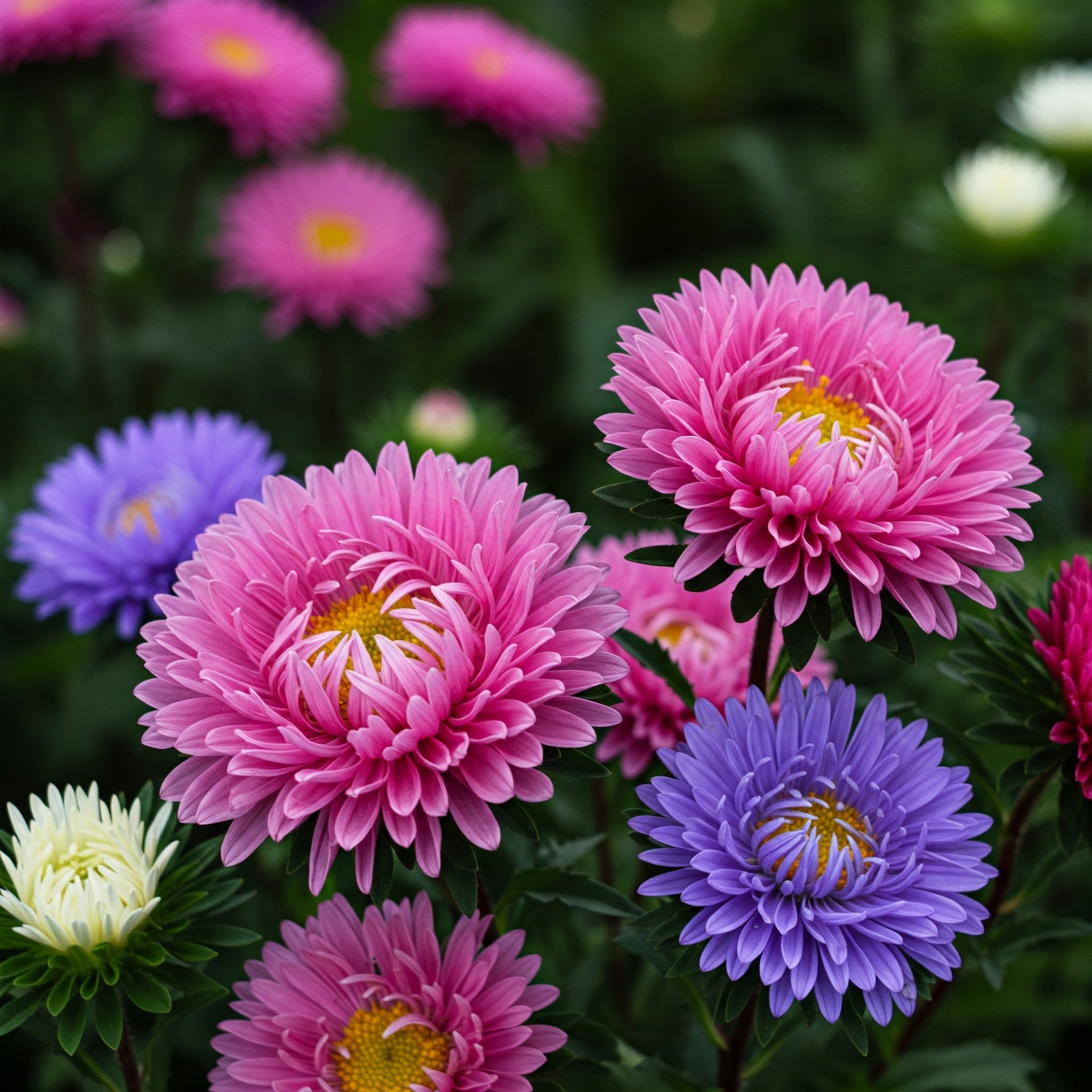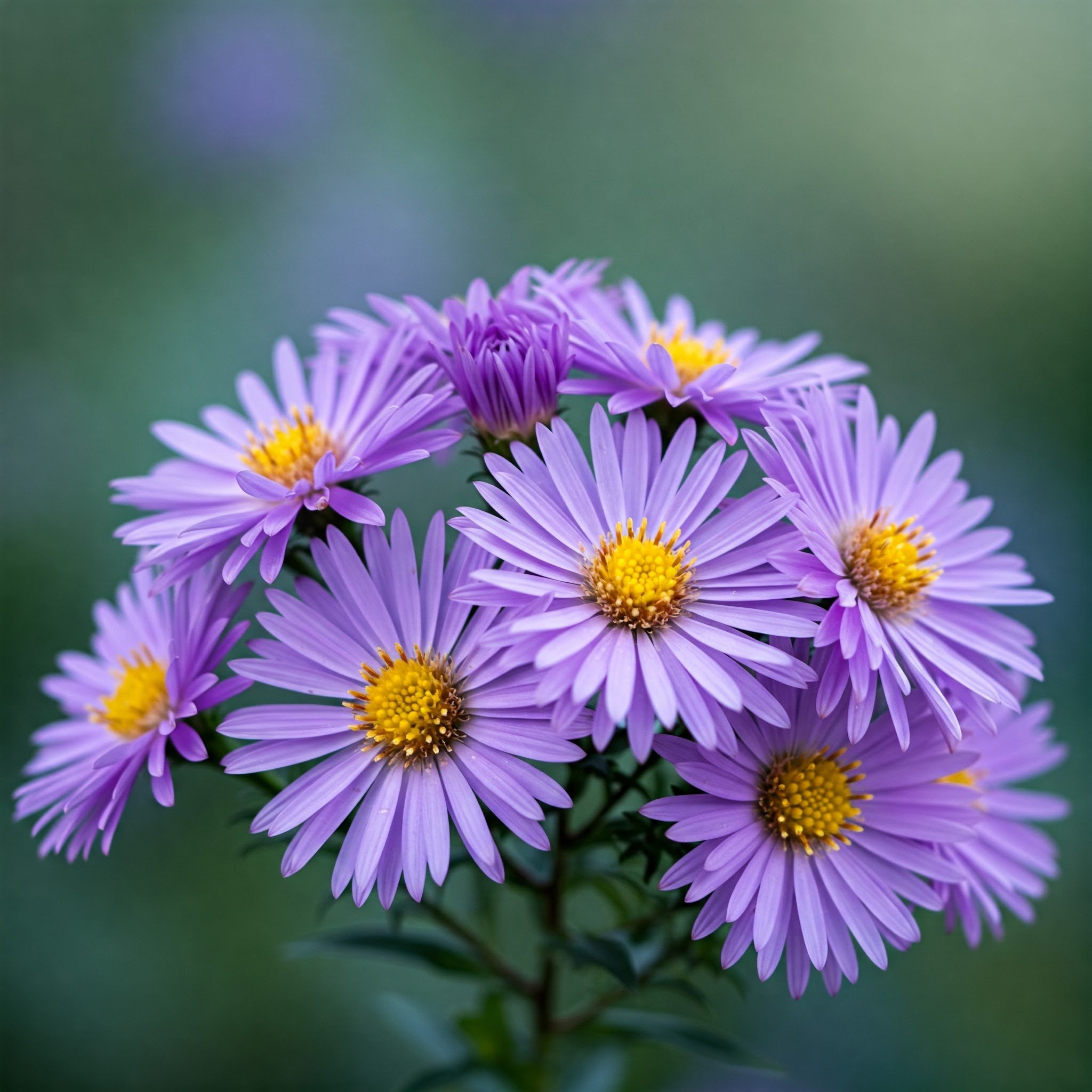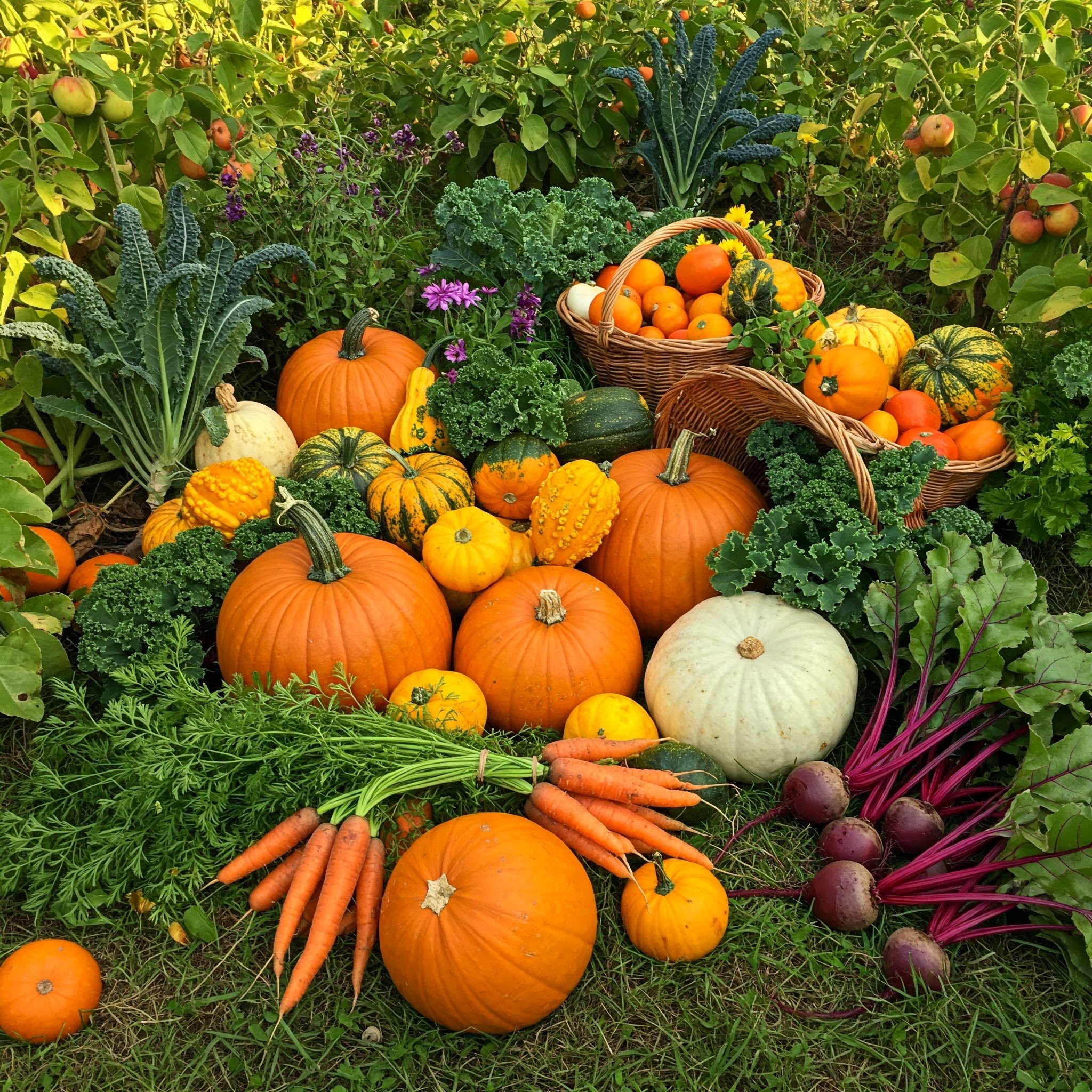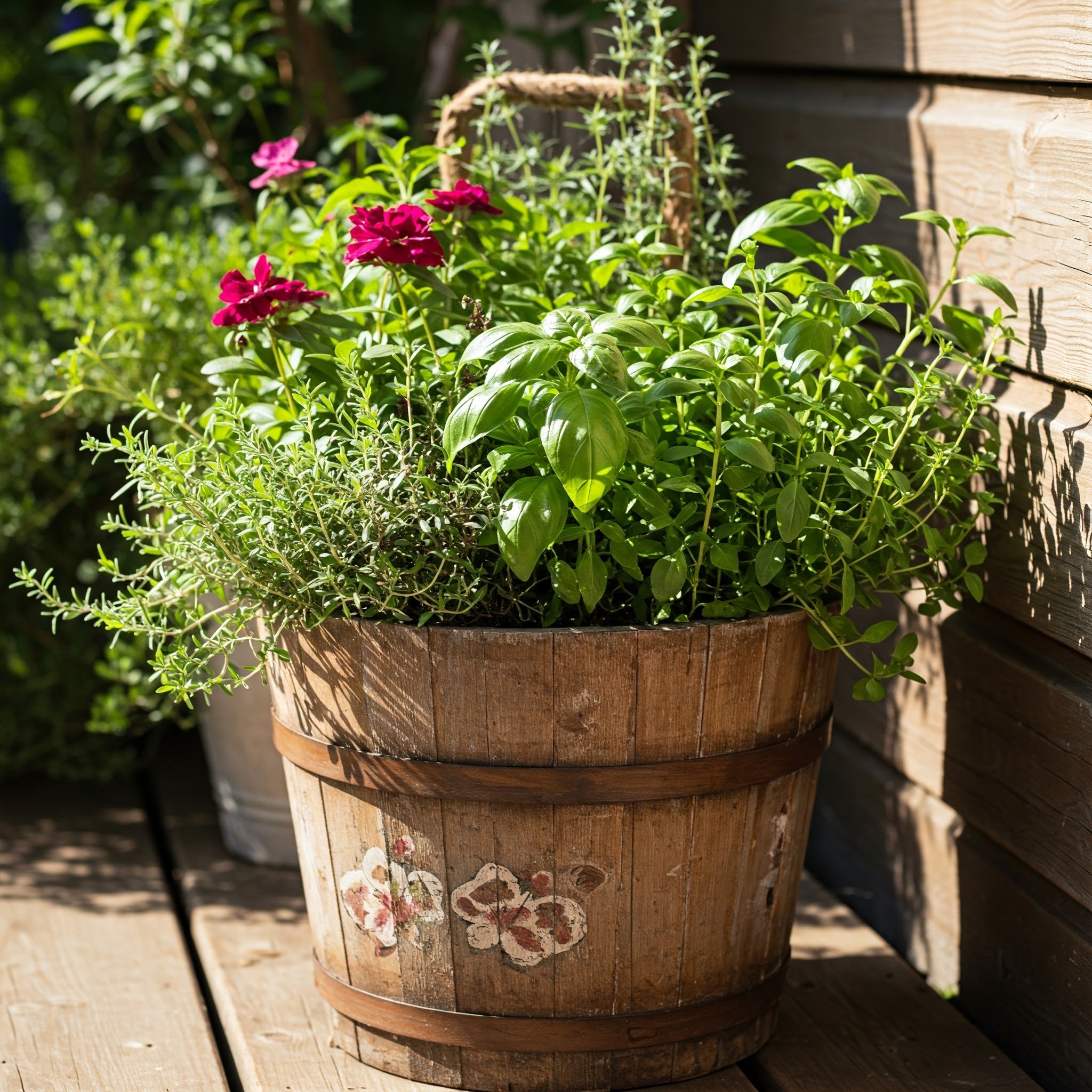Are Asters Perennials or Annuals? Learn the Truth
Wondering if asters are perennials or annuals? Learn the truth about these star-like flowers, discover pro tips for care, and keep your garden gorgeous all season long with this comprehensive guide!
Have you ever glanced at a neighbor’s vibrant autumn garden and suddenly blurted out, “Wow, those flowers are absolutely heavenly—what are they?” only to discover the answer’s a resounding “They’re asters!” It’s no surprise that these dazzling, star-shaped blooms—aptly named after the Greek word for “star”—can stop onlookers dead in their tracks. And here’s the million-dollar question that tends to puzzle countless gardening enthusiasts: Are Asters Perennials or Annuals? Learn the Truth now, and you can elevate your gardening know-how to a whole new level.
In this thorough exploration, we’ll cover everything from the different varieties of asters to their growing conditions. We’ll also delve into which ones come back year after year (spoiler alert: most do), and how you can make sure they put on a spectacular show no matter which side of the perennial/annual divide they fall on. Heck, we’ll even toss in a few extra tidbits—like top-notch watering tips, soil recommendations, and common pitfalls to avoid—so that by the time you reach the end, you’ll feel practically unstoppable in your gardening game. Ready? Let’s get started!
1. Aster Basics: Why They’re So Popular
Sure, we can talk about whether these beauties are annuals or perennials, but first things first—why is everyone so darn obsessed with asters?
1.1 A Burst of Fall Color
When summer is winding down and many of your garden’s superstars start looking a bit peaked, asters step into the spotlight. They bloom in late summer and continue well into the fall, providing that much-needed color injection when everything else seems ready to call it quits.
1.2 Low Maintenance, High Reward
Let’s not beat around the bush: Most gardeners adore plants that can offer showy blooms without requiring a full-time caretaker. Asters are relatively undemanding. Give them some decent soil, moderate watering, and enough sunlight, and they’ll reward you with a profusion of flowers that make you look like you’ve got the greenest thumb around.
1.3 Bee and Butterfly Magnets
You’re probably aware that pollinators—especially bees and butterflies—are vital for a healthy ecosystem. Asters are prime pollinator bait, buzzing with all sorts of beneficial insects that keep your garden thrumming with life. So if you like your yard lively, these blossoms are definitely up your alley.
1.4 Color Galore
From soft pastel pinks to electric blues and royal purples, asters come in a rainbow of hues. If you’ve ever seen a border planted exclusively with varied asters, you know they can create a tapestry of color that’s downright mesmerizing.
All right, enough small talk. Let’s address the elephant in the greenhouse: Are Asters Perennials or Annuals? Learn the Truth and put an end to your confusion once and for all.
2. The Big Question: Are Asters Perennials or Annuals? Learn the Truth
Ready for it? The short answer is that, in general, most commonly grown asters in gardens are perennials. However, some types are grown as annuals, especially in regions with harsh climates or shorter growing seasons.
2.1 Native Asters vs. Garden Hybrids
True Asters (Genus Aster): These are predominantly found in Europe, Asia, and Africa. Historically, they fall under the genus Aster.
New World Asters (Genus Symphyotrichum and Others): After botanical reclassification, many North American “asters” were moved to different genera like Symphyotrichum, Eurybia, and more. These are still commonly referred to as asters, but they’re not technically in the original Aster genus.
Despite this botanical shuffle, they’re all known to the everyday gardener as “asters.” Most of these species—and their cultivars—are perennials. You plant them once, and they’ll come back year after year, provided they’re happy in their environment. But do note, some hybrids are short-lived perennials or might be treated as annuals depending on your climate.
2.2 Annual Asters
While the majority of garden asters are perennial, you’ll occasionally come across annual varieties. The China aster (Callistephus chinensis), for instance, is often grown as an annual and can produce gorgeous blooms in just one season. These beauties aren’t typically referred to as “true asters,” but many folks lump them all under the same “aster” umbrella.
If you’re in a region with extremely cold winters (think USDA Hardiness Zones 3 and below), even perennial asters may behave more like annuals, unable to survive the frosty conditions. In that scenario, you might need to replant every spring or look into more cold-hardy varieties.
3. Growing Conditions: How to Keep Asters Happy
Now that we’ve tackled the perennial-versus-annual dilemma, let’s check out what it takes to ensure that your asters, regardless of their type, thrive like champs. Because believe me, you don’t want to be the gardener whose asters conk out halfway through the season.
3.1 Soil and Drainage
Loose, Well-Draining Soil: Asters dislike sitting in water. If your soil is heavy clay or drains poorly, consider raised beds or add organic matter to lighten things up.
pH Preference: Slightly acidic to neutral soils (pH 6.0–7.0) are ideal, but asters aren’t terribly fussy. As long as the soil isn’t too alkaline, you’re probably golden.
3.2 Light Requirements
Full Sun: Most varieties appreciate six to eight hours of sunlight per day. In partial shade, they might stretch out more (aka get leggy) and produce fewer blooms.
Partial Shade Tolerance: Some woodland asters can handle dappled shade, but their flowering might be less robust.
3.3 Watering Habits
Regular, Moderate Watering: Aim to keep the soil evenly moist but not soggy. A thorough watering once or twice a week is usually sufficient, depending on your climate.
Mulching: Applying a layer of mulch around your asters helps retain moisture and keeps roots cool, especially during scorching summer months.
3.4 Fertilizing Tips
Light Feeders: Asters don’t demand heavy fertilization. A balanced, slow-release fertilizer applied once in the spring, and perhaps again in mid-summer, can help maximize bloom potential.
Avoid Overfeeding: Too much nitrogen will encourage lush foliage but fewer flowers.
4. Noteworthy Aster Varieties You’ll Love
Think all asters are identical? Think again. Gardeners have a ton of varieties to choose from, each with its own unique flair.
New England Aster (Symphyotrichum novae-angliae)
Bloom Color: Pink, purple, lavender
Height: Can reach up to 4 feet
Why You’ll Love It: Super hardy and a magnet for late-season pollinators
New York Aster (Symphyotrichum novi-belgii)
Bloom Color: White, pink, purple
Height: Typically 2–3 feet
Why You’ll Love It: Known for abundant blooms and vibrant petals
Wood Aster (Eurybia divaricata)
Bloom Color: White or pale shades
Height: About 1–2 feet
Why You’ll Love It: Tolerates partial shade and lights up woodland gardens
Heath Aster (Symphyotrichum ericoides)
Bloom Color: Primarily white, sometimes pinkish
Height: 1–3 feet
Why You’ll Love It: Dense, billowy blooms perfect for a “wildflower” look
China Aster (Callistephus chinensis)
Bloom Color: Wide range (white, pink, red, purple, blue)
Height: 1–2 feet
Why You’ll Love It: Though technically an annual, it offers spectacular floral displays in various shapes and sizes
5. Planting and Care Calendar
If you’re chomping at the bit to get your asters into the ground, here’s a quick timeline that’ll keep you on track. Keep in mind, though, your local climate and growing zone can shift these dates a tad.
Early Spring
Start seeds indoors if you’re growing annual asters like China asters.
Prepare garden beds by loosening soil, adding compost, and removing any leftover debris from winter.
Mid to Late Spring
Transplant young perennial asters (or seedlings) outdoors after your last expected frost date.
Water them in well, ensuring the soil is moist but not waterlogged.
Early to Mid Summer
Water consistently, and consider mulching to help retain moisture.
Lightly fertilize if you haven’t already. Watch for signs of pests or diseases.
Late Summer to Early Fall
Asters begin to bloom! Keep an eye on watering needs, especially if rainfall is scarce.
Deadhead spent blooms to encourage even more flowers.
Mid to Late Fall
Continue deadheading if you want to prolong the bloom time.
Enjoy the show until frost takes them out (especially if you have annual asters) or until the perennials start to die back.
Winter
Cut back perennial asters to the ground once they’ve gone dormant. This can help prevent overwintering pests.
Apply a layer of mulch for winter protection if needed.
6. Common Aster Problems and How to Solve Them
Yes, asters are generally hardy, but like every other plant under the sun, they can encounter a few hiccups. Here’s how to sidestep the most frequent issues.
6.1 Powdery Mildew
A white, dusty fungus that shows up on leaves—yikes! To dodge it, provide ample spacing for airflow, avoid overhead watering, and pick mildew-resistant varieties if possible.
6.2 Root Rot
Usually triggered by soggy conditions. Make sure your soil drains well, and avoid letting water pool around the roots.
6.3 Aphids and Spider Mites
Tiny pests can appear on the undersides of leaves, sapping the plant’s vigor. A quick spray of insecticidal soap or a strong blast of water can help keep them in check.
6.4 Legginess
If your asters are “reaching” or flopping over, chances are they’re not getting enough sunlight. Move them to a brighter spot or stake them for support.
6.5 Poor Bloom Production
Could be due to insufficient sunlight, nutrient imbalances, or simply that the plant is too young. Patience is a virtue; perennial asters often perform better in their second or third year.
7. Propagation: More Asters for Less Effort
Who doesn’t like freebies? You can multiply your asters without shelling out for new plants every season.
Seed Collection
Wait for the seed heads to dry on the plant.
Gently tap them into a paper bag.
Store seeds in a cool, dry place until you’re ready to sow in spring.
Division
Ideal for perennial asters.
In early spring or fall, dig up the entire clump.
Split it into sections with a clean spade or gardening knife.
Replant immediately, watering thoroughly.
Cuttings
Snip off healthy, non-flowering shoots about 4–6 inches long.
Strip the lower leaves and dip the cut end in rooting hormone.
Place the cuttings in a pot with a well-draining mix, keep it moist, and wait for roots to form.
Remember: If you’re dealing with annual asters, you’ll likely rely more on seeds rather than division. But hey, even annuals can sometimes self-seed if you leave the heads on!
8. Designing with Asters in the Garden
So you know Are Asters Perennials or Annuals? Learn the Truth—but how do you actually incorporate them into a gorgeous garden design? A few ideas:
Mixed Borders: Combine tall varieties like New England asters with shorter plants in the front, such as marigolds or pansies, to create a layered look.
Cottage Gardens: Asters pair wonderfully with other cottage-style flowers like coneflowers, hollyhocks, and salvias.
Containers: Dwarf asters or annual asters can make perfect container companions for geraniums, ornamental grasses, or even trailing petunias.
Cut-Flower Gardens: Many aster varieties have sturdy stems and long-lasting blooms, making them a florist’s favorite. Plant a row just for bouquets, and you’ll thank yourself every time you see that fresh arrangement on your kitchen table.
10. Pro Tips and Tricks for Aster Success
If you’re vying for the title of “Neighborhood Aster Guru,” these pointers might just seal the deal:
Pinch, Pinch, Pinch: Pinching your asters in late spring (removing the top inch or two of growth) encourages them to grow bushier and produce more flowers rather than shooting straight up.
Watch Out for Weeds: Keep the area around your asters weed-free. Weeds can compete for nutrients and water, so a little diligence goes a long way.
Stake if Needed: Taller varieties like New England asters might become top-heavy when they’re loaded with blooms. Staking or planting them against a fence can offer support.
Succession Planting: If you’re a fan of annual asters, consider planting them in waves, a few weeks apart. This ensures you’ll have a continuous bloom cycle rather than a single flush.
11. Seasonal Care: Autumn and Beyond
When you think autumn, you probably conjure images of pumpkins, colorful leaves, and—yep—asters. But what happens when the frosty nights roll in?
11.1 Autumn Glory
Asters are often at their peak in autumn, gleaming in the crisp sunlight. Keep them watered if the season is dry, and continue deadheading to stretch the floral show as long as possible.
11.2 First Frost and Cleanup
Once a hard frost does arrive, annual asters will likely be done for the season, so feel free to pull them up and toss them onto the compost pile if they’re healthy. For perennial asters, let the stems die back naturally, then trim them down to a few inches above the ground.
11.3 Mulching Over Winter
If you live in a colder climate, adding a layer of mulch (such as straw or leaves) around the base of perennial asters can help protect their roots from freeze-thaw cycles. Remove the mulch in early spring, and the cycle begins anew.
Conclusion
In the world of eclectic home interior design, there are no boundaries – only possibilities. Embrace the freedom to curate a space that resonates with your soul, defying the norms of conventional design. Your home is a reflection of you, so let it be as wonderfully eclectic as you are. Dive into the diverse, the unexpected, and the utterly captivating world of eclectic home interior design – where your imagination knows no bounds.
Frequently Asked Questions
Step into the world of Danish Pastel Aesthetics, where simplicity meets serenity. In this article, we will explore 10 enchanting ideas to infuse your living space with the soft and calming hues inspired by Danish design. From muted tones to minimalist elegance, let's embark on a journey to create a home that whispers tranquility in every corner.
































